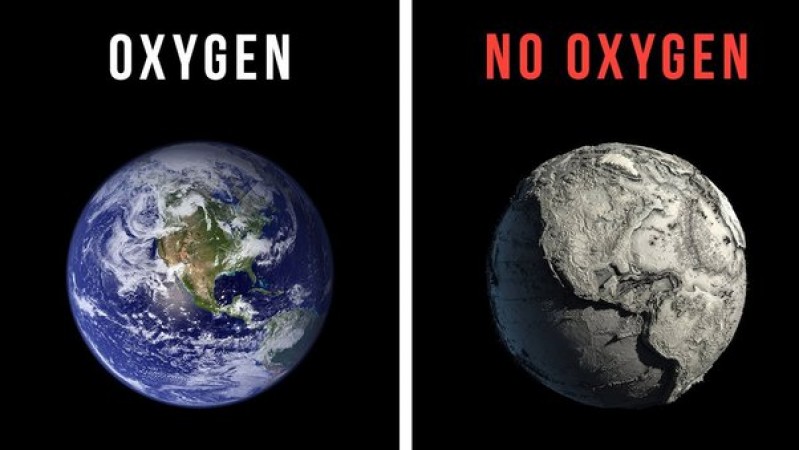
In the first second of this hypothetical scenario, a surreal silence blankets the planet. Sound waves, typically traveling through air molecules, now have no medium to propagate. The absence of oxygen means no air to carry the vibrations, rendering the world eerily quiet. It's a moment of profound stillness, a departure from the constant hum of life.
As the second ticks away, a wave of panic sweeps across the globe. Human and animal bodies, finely tuned to the availability of oxygen, react instinctively. The abrupt absence of the life-sustaining gas triggers a survival reflex. People gasp for breath, their bodies desperately trying to compensate for the sudden vacuum of oxygen. Animals, too, display signs of distress, their primal instincts kicking in to confront the immediate threat.
Simultaneously, the impact on plant life becomes evident. Plants, the unsung heroes of our atmosphere, are the primary oxygen producers through photosynthesis. However, in this scenario, photosynthesis grinds to a halt. The abrupt cessation of this vital process disrupts the delicate balance of the Earth's ecosystems. Flora, an integral part of the food chain, faces stress, triggering a ripple effect that extends through the entire web of life.
Moving beyond the initial 5 seconds, the atmospheric repercussions unfold. The sudden disappearance of oxygen causes a chain reaction in the air we breathe. Winds, pressure systems, and temperature experience abrupt and unpredictable fluctuations. The stability that the atmosphere once provided is now thrown into disarray, with potential impacts on weather patterns and global climate.
Industries, intricately woven into the fabric of modern life, grind to a sudden halt. Combustion engines, essential for transportation and power generation, cease to function without the oxygen needed for the combustion process. Factories fall silent, and the wheels of progress screech to a temporary standstill. The absence of oxygen becomes a stark reminder of the interconnectedness of human activities and the dependence on this invisible gas.
Healthcare systems face an unprecedented surge in patients experiencing respiratory distress. The demand for oxygen skyrockets, overwhelming hospitals and medical facilities globally. The sudden influx of patients requires a swift and coordinated response to ensure the survival of those affected. The scenario exposes the vulnerability of healthcare systems in the face of unexpected challenges.
Beyond the immediate human and environmental impacts, the absence of oxygen has consequences for the protective shield surrounding our planet—the ozone layer. With oxygen playing a role in stabilizing and maintaining the ozone layer, its sudden disappearance weakens this protective barrier. The ozone layer becomes more vulnerable to external threats, allowing harmful solar radiation, particularly ultraviolet (UV) rays, to penetrate more easily. This increased exposure poses a significant threat to life on Earth, including potential health risks for humans and animals.
In the aftermath of this hypothetical 5-second oxygen disappearance, a window of adaptation opens for living organisms. Species with the genetic resilience to endure this brief but critical event may pass on adaptive traits to future generations. The incident becomes a catalyst for evolutionary changes, shaping the trajectory of life on Earth. It's a glimpse into the capacity of life to adapt to even the most unexpected challenges.
Ecosystems, resilient yet fragile, adapt to the temporary disruption caused by the absence of oxygen. Some species thrive in the altered conditions, while others face the brink of extinction. The balance within ecosystems shifts, prompting changes in predator-prey relationships, competition for resources, and the overall biodiversity of different habitats. The ecological landscape undergoes transformation as nature seeks a new equilibrium.
Humanity, confronted with the fragility of its dependence on oxygen, responds with a surge of innovation. The scenario prompts accelerated research and development in life support systems and oxygen production technologies. Scientists and engineers strive to create robust solutions to prevent or mitigate the impact of a potential future oxygen crisis. The incident becomes a catalyst for advancements that redefine our relationship with the very air we breathe.
In this exploration of a 5-second disappearance of oxygen, the world experiences not only a momentary chaos but also long-term consequences. It serves as a stark reminder of the delicate balance that sustains life on Earth. The interplay between atmospheric components, human activities, and the intricate web of ecosystems highlights the interconnectedness of our planet. As we consider this hypothetical scenario, it prompts reflection on our responsibility to safeguard the fundamental elements that make Earth a habitable and vibrant home.